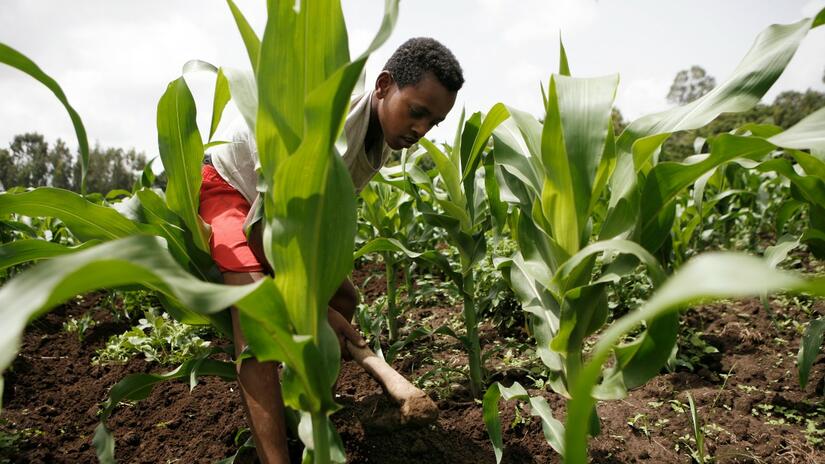Climate-smart disaster risk reduction
The IFRC is one of the biggest community-based disaster risk reduction actors in the world. Together with our 191 National Societies, we help communities around the world to reduce their risks, protect themselves and prepare for emergencies.
About climate-smart disaster risk reduction
There is nothing natural about a disaster. Shocks and hazards do not inevitably lead to catastrophe. Yet every year 67,000 people are killed, 26 million are driven into poverty, and nearly 200 million people are affected by natural hazards worldwide.
It is the world’s poorest and most exposed people who suffer the most. And older people, women and girls and people living with disabilities are disproportionately affected.
Climate-smart disaster risk reduction saves lives by limiting the amount of risk people face and the level of damage a crisis might cause. It can help communities effectively prepare for and cope with natural hazards.
This approach is vital because the number of disasters is increasing every year. Climate change, population growth, urban development in risk-prone locations and changes in land use are all increasing the risks.
Our climate action

A man works his maize field in a village in southern Ethiopia, where some farmers have begun to protect themselves against weather extremes through 'index insurance' that pays out benefits based on predictions such as rainfall levels
Photo: IFRC/Jose Cendon
The IFRC and our network of 191 National Societies and millions of volunteers work closely with communities exposed to climate-related hazards every day.
We’re making our work climate-smart, advocating for greater climate change adaptation and significantly increasing our disaster risk reduction efforts worldwide. We are increasingly considering climate risks in all we do, anticipating extreme weather events ahead of their impact and pursuing nature-based solutions.
We are also reducing our own environmental footprint and greening our operations.
For concrete examples of climate action by our National Societies and partners, check out this report by the Red Cross Red Crescent Climate Centre.
And find out more about our commitments to step up our response to climate and environmental crises in the Climate and Environment Charter for Humanitarian Organizations.
Explore our work
Early warning, early action
We take many different steps—from forecast-based financing to setting up community early warning systems—to protect people before a disaster strikes.
Community knowledge and awareness raising
We help communities around the world understand the risks they face and how they can protect themselves.
Improving disaster laws
We support governments to introduce laws and policies that reduce existing risks posed by natural hazards, prevent new risks from arising and make people safer.
Risk assessment and planning
We work hand-in-hand with communities to help them identify, understand and address risks to their lives and livelihoods.
Nature-based solutions
We implement nature-based solutions, such as protecting and restoring forests, to protect communities against disasters and the impacts of climate change.
Urban resilience
For most of humanity the future involves living in cities. But to do so safely, urban communities need to be prepared for, and resilient to, the increasing and changing shocks they face.
Key reports
Extreme heat: Preparing for the heat waves of the future
Read more
Working With Nature to Protect People
Read more
Climate Action and Environmental Sustainability - Survey Report
Read more
People Centred Early Warning Systems
Read more
Turning the tide: adapting to climate change in coastal communities
Read more
Displacement in a Changing Climate
Read more
World Disasters Report 2020
Read more
The Cost of Doing Nothing
Read more
